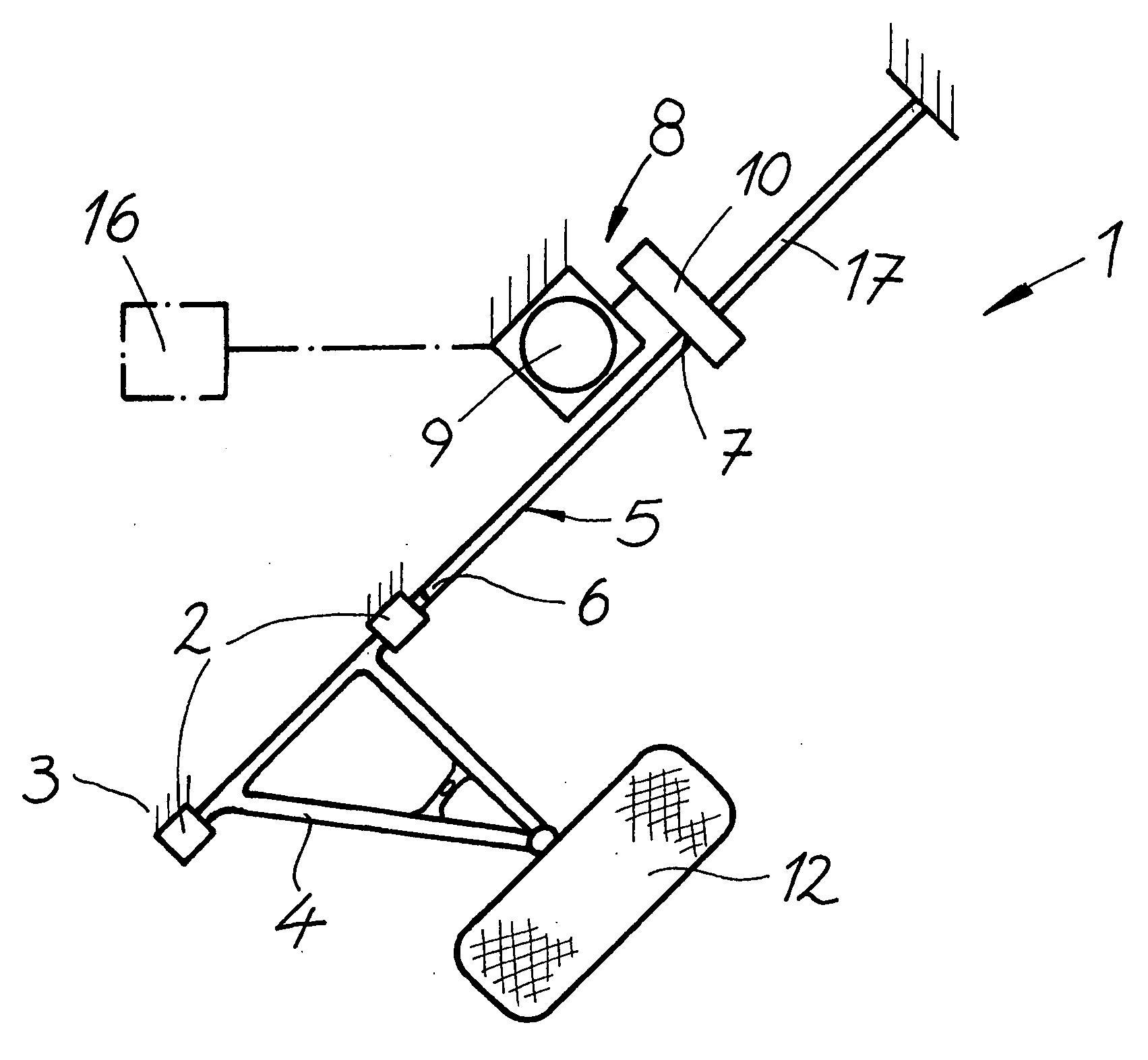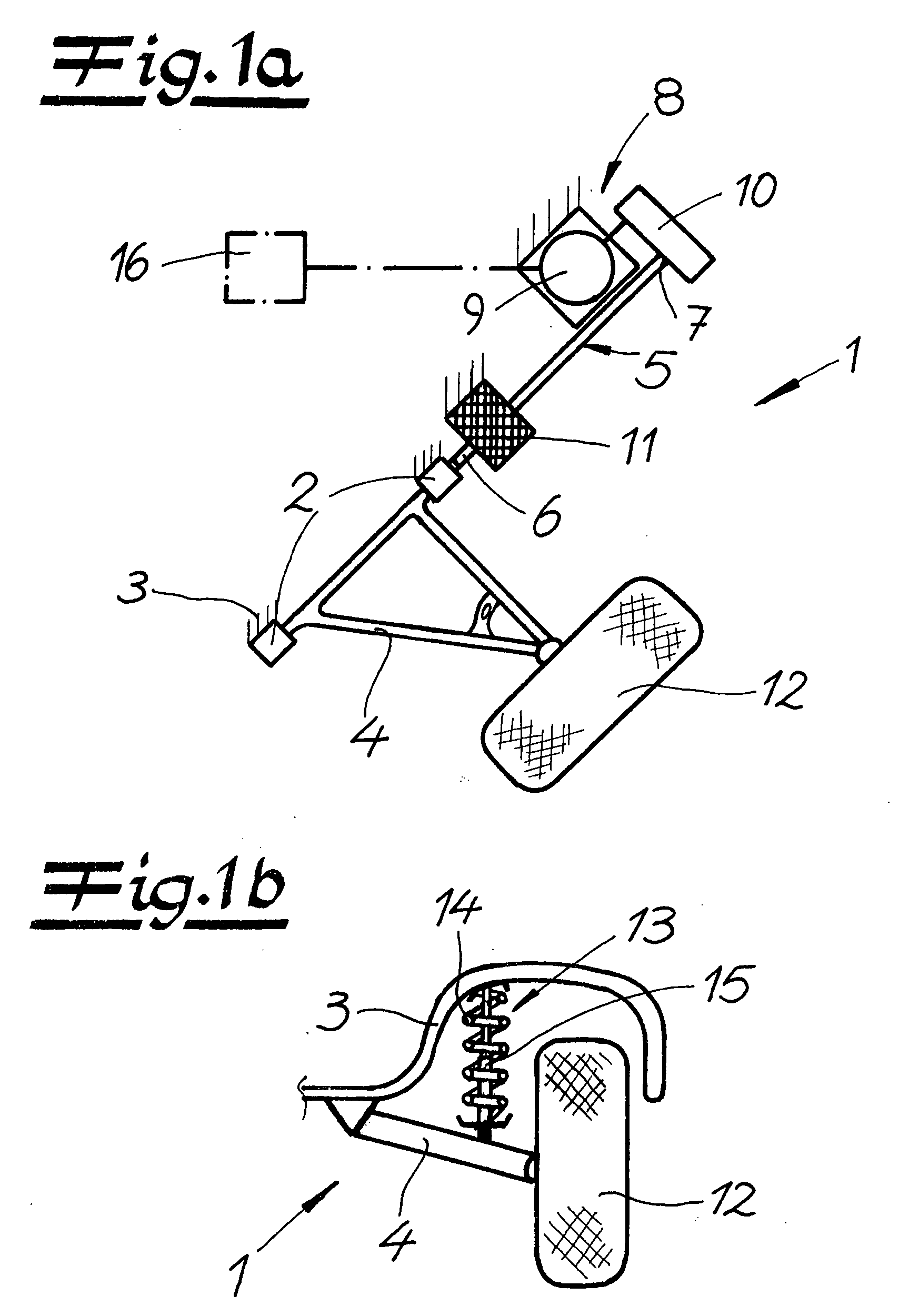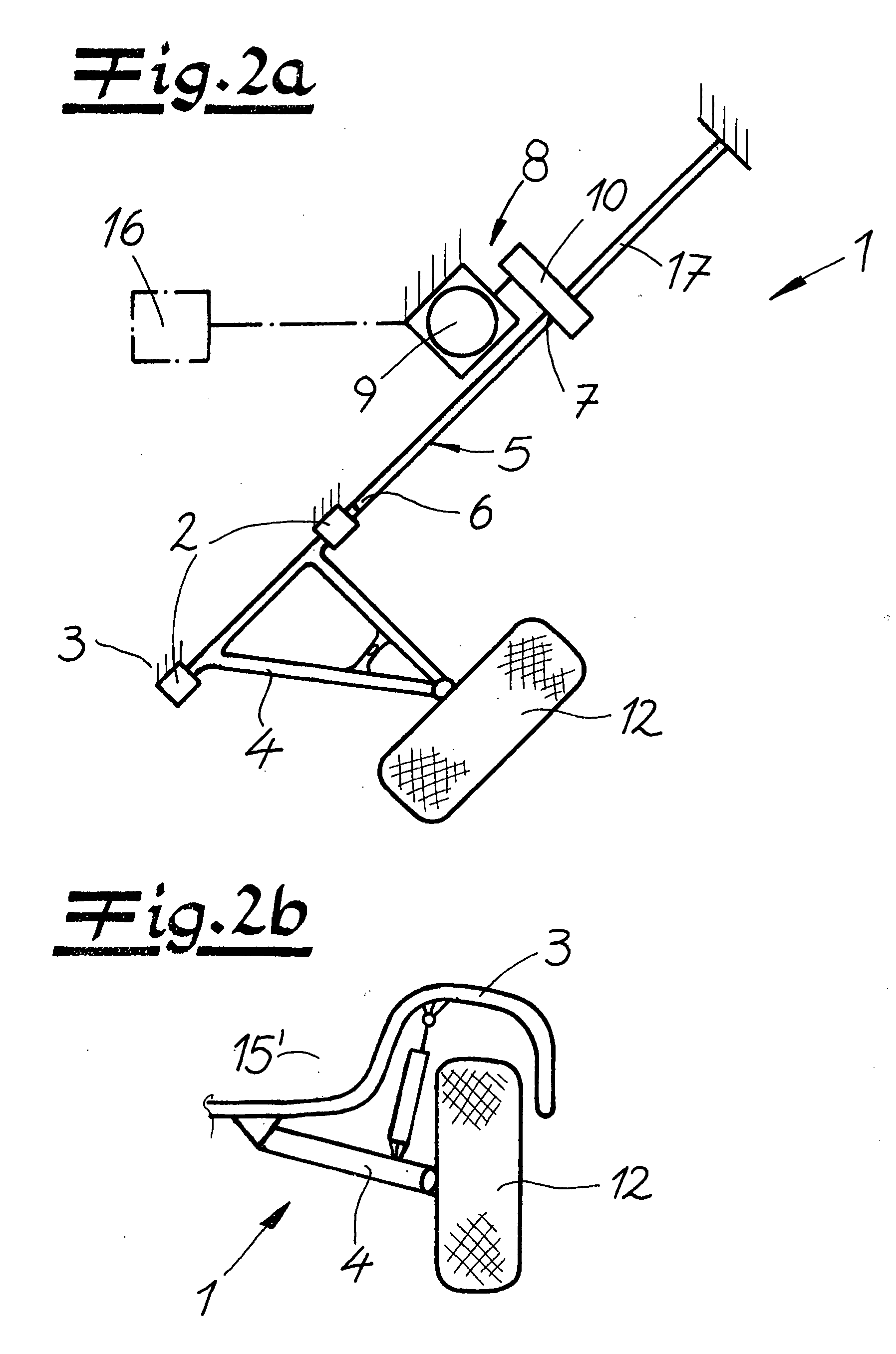Wheel suspennsion for a motor vehicle
- Summary
- Abstract
- Description
- Claims
- Application Information
AI Technical Summary
Benefits of technology
Problems solved by technology
Method used
Image
Examples
Embodiment Construction
[0029]Turning now in detail to the drawings, FIG. 1a shows the fundamental structure of a wheel suspension 1 for a motor vehicle, having a transverse control arm 4 that can be attached to a vehicle body 3 by way of bearings 2 and can be rotated about a longitudinal axis, and having a body spring 5 configured as a tubular torsion bar for absorbing rotational movements of transverse control arm 4 around the longitudinal axis. The body spring is disposed on transverse control arm 4 so as to rotate with it, with a first end 6. At a second end 7 of body spring 5, an actuator 8 is disposed, made up of a servomotor 9 and a step-down gear mechanism 10 that acts on body spring 5, to adjust the angle of rotation of body spring 5. Close to transverse control arm 4, a passive rotation damper 11 is provided as a damping element, which connects body spring 5 with vehicle body 3. A vehicle wheel 12 is disposed on transverse control arm 4.
[0030]FIG. 1b shows the assembly according to FIG. 1a in a v...
PUM
 Login to View More
Login to View More Abstract
Description
Claims
Application Information
 Login to View More
Login to View More - R&D
- Intellectual Property
- Life Sciences
- Materials
- Tech Scout
- Unparalleled Data Quality
- Higher Quality Content
- 60% Fewer Hallucinations
Browse by: Latest US Patents, China's latest patents, Technical Efficacy Thesaurus, Application Domain, Technology Topic, Popular Technical Reports.
© 2025 PatSnap. All rights reserved.Legal|Privacy policy|Modern Slavery Act Transparency Statement|Sitemap|About US| Contact US: help@patsnap.com



